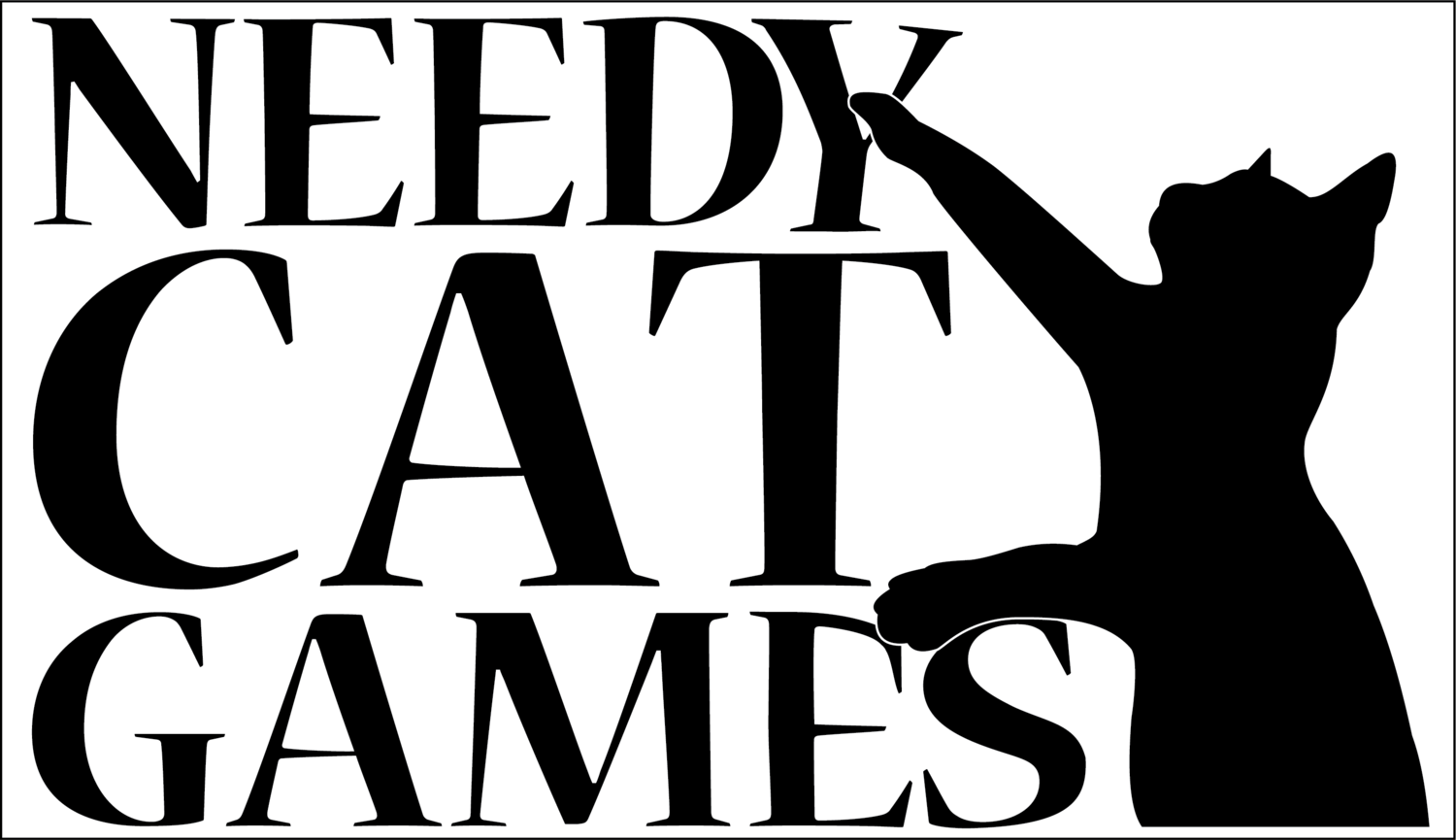We’ve been beavering away here at the Needy Cat Cave to get everything prepped for our Kickstarter launch at the end of February! Today we’ve got a bit of a treat for you - as we thought it would be cool to talk through some of the final card designs and how we got there.
Making ‘Artefacts’
When you open a board game and go through all of the components, there’s a very physical experience there. Popping out counters, opening up packs of cards, getting out a playing board. Each part of the physical game represents some kind of interaction with the rules. Sometimes it may represent something more abstract, like a counter for tracking Victory Points. Other times it may be a physical representation of an actual in-game and indeed in-setting element, such as coins to track the money you have gathered.
We refer to game components that represent in-setting elements as artefacts. They are physical things, that represent the same thing within the world the game is set in. In these Robot Fight Club blogs, we’ve already talked about the 50’s retro-future setting and we made a decision early on to try and reflect that by having as many elements of the in-game world represented as possible.
What follows is a series of cards which have been designed as if they are ‘artefacts’ of the in-game universe. I hope you enjoy!
Control Cards
In Robot Fight Club, you play cards that give you different options for movement and attacking your opponents. We had the concept that in this universe, the robots are controlled by old-school punchcards plugged into some device. Each punchcard giving a single instruction to one robot.
The physical limitations of the punchcard reflect the play one, draw one nature of the game. It also makes a great visual if you imagine that the Reset card (which allows you take reshuffle all of your cards and recreate your deck) is a reflection of the cybernaut scrambling around trying to pick up all of the punchcards they’ve already used!
The back of the card reflects old school punch cards, but we chose to make them portrait as opposed to landscape as they worked better in the space. We included the name of the Robotics Lab where the Robot Fight Club takes place to give more weight to the setting.
This is a Control Card for Surplus and combines the rules text and iconography, while still reflecting the punch card style in the background.
The front of the cards was a challenge as we needed to convey all of the rules text and icons while also ensuring it was clear and easy to understand by the players. But we still wanted to reflect the punch card effect. I think this design takes the best of both worlds. Initially, we did not have the white text box, but the punchcard effect interfered with the text. So I think this is a great compromise.
This Control Card is designed to feel like an Artefact, that something like this might be what the characters in the game, the school kids, might actually interact with.
Cybernaut Cards
One of my favourite cards in the game are the Cybernaut Cards. We decided these should look like ID Cards of the characters in the universe. That these would be things that the kids carry around in their pockets and as such, we made them look creased and battered. Hanna, our graphic designer even made sellotape elements that could be placed on the cards to give them that extra level of wear and tear! Everything, from the font selection, the way it’s faded unevenly, the wonky placement of the photos, it’s all done to reinforce the message that this is a living artefact within the game universe and I think it works brilliantly!
We wanted each of the Cybernaughts to feel different in terms of game play and character. Giving them a quote on the front and specific special rules that change they game serves to reinforce that feeling while giving the game variety when played.
The text on the back serves to reinforce the character of the Cybernaught.
If you’re keen to find out more about Robot Fight Club and get notified when the Kickstarter goes live, sign up to our Newsletter HERE! You can also join our Fans of Robot Fight Club Facebook page for sneak peeks and discussion about the game.





